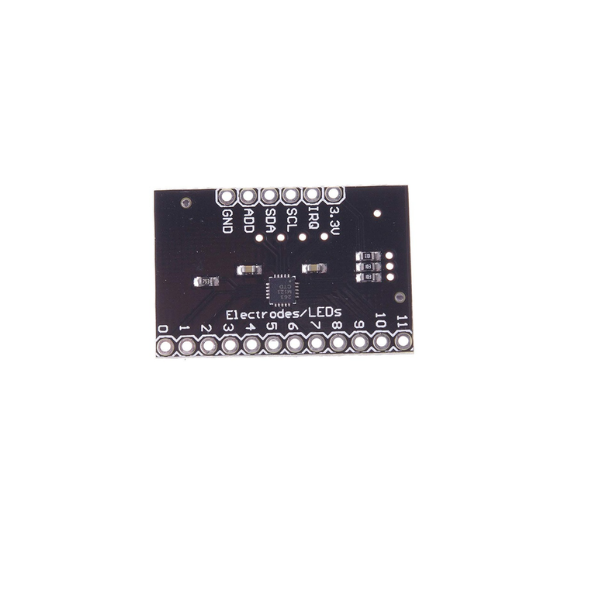Description:
The MPR121 is a capacitive touch sensor controller that utilizes an I2C communication interface.
It's designed to detect touch inputs through electrodes, allowing for the creation of touch-sensitive interfaces.
The breakout board simplifies the integration of the MPR121 chip into various electronic projects.
Key Features:
Capacitive Touch Sensing: Detects touch through changes in capacitance.
I2C Interface: Communicates with microcontrollers using the I2C serial protocol.
Multiple Electrodes: Supports up to 12 individual electrodes, and a simulated 13th.
LED Driving Pins: Includes eight pins that can be used to drive LEDs when not used as electrodes.
Configurable Jumpers: On board jumpers allow for I2C address alteration, and pull up resistor connection or disconnection.
Applications:
- Touch-sensitive control panels.
- Interactive displays.
- Capacitive touch keyboards.
- Human-computer interfaces.
- Gaming interfaces.
- Any project requiring touch input.
Specifications:
- Connection Interface: I2C
- Operating Voltage: 2.5-3.6 VDC
- Number of Touch Inputs: 12 + 1 simulated.
DATA SHEET AND USECASE
Using the MPR121 Breakout V12:
Power Supply:
- Voltage Range: The MPR121 operates within a voltage range of 1.71V to 3.6V.
- Power Pins:
- VIN: Connects to the main power supply (3.3V to 5V).
- GND: Ground reference.
I²C Communication:
- Pins:
- SCL: Serial Clock Line.
- SDA: Serial Data Line.
- Address Configuration: The MPR121's I²C address can be set by connecting the ADDR pin to VSS, VDD, SDA, or SCL, resulting in addresses 0x5A, 0x5B, 0x5C, or 0x5D, respectively.
Interrupt Functionality:
- IRQ Pin: This pin serves as an interrupt output, signaling when a touch or release event is detected.
Electrode Connections:
- ELE0 to ELE11: These pins connect to touch electrodes, which can be constructed using conductive materials like copper foil or conductive fabric.
Assembly and Wiring:
- Soldering: Begin by soldering header pins to the breakout board for secure connections.
- Connections:
- VIN to Power Supply: Connect to a 3.3V or 5V source.
- GND to Ground: Connect to the system ground.
- SCL to I²C Clock: Connect to the microcontroller's SCL pin.
- SDA to I²C Data: Connect to the microcontroller's SDA pin.
- IRQ (Optional): Connect to a digital input on the microcontroller if interrupt-driven touch detection is desired.
Programming and Libraries:
- Arduino: Libraries like Ada-fruit's MPR121 library facilitate easy integration and provide functions to detect touch events.
- Python/Circuit Python: For platforms like Raspberry Pi, the Ada-fruit Circuit Python MPR121 library offers similar functionality.
Electrode Design:
- Materials: Use conductive materials such as copper tape, conductive ink, or metal objects.
- Shape and Size: The electrode's design can affect sensitivity; experimenting with different shapes and sizes can help achieve desired responsiveness.








